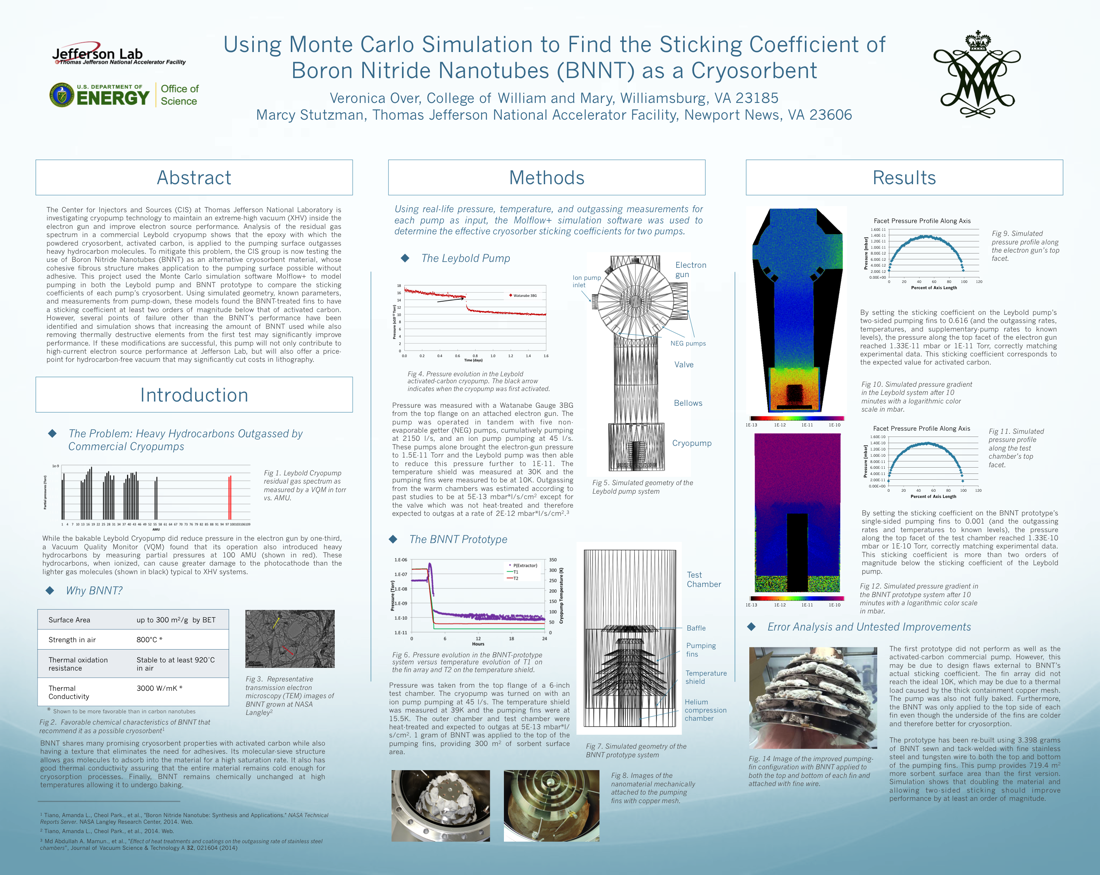Undergraduate Research at Jefferson Lab
Using Monte Carlo Simulation to Find the Sticking Coefficient of Boron Nitride Nanotubes (BNNT) as a Cryosorbent
Student: Veronica Over
School: College of William and Mary
Mentored By: Marcy L. Stutzman
The Center for Injectors and Sources (CIS) at Thomas Jefferson National Laboratory is investigating cryopump technology to maintain an extreme-high vacuum inside the electron gun and improve electron source performance. Analysis of the residual gas spectrum in a commercial Leybold cryopump shows that the glue with which the powdered cryosorbent, activated carbon, is applied to the pumping surface outgasses heavy hydrocarbon molecules. To mitigate this problem, the CIS group is now testing the use of Boron Nitride Nanotubes (BNNT) as an alternative cryosorbent material, whose cohesive fibrous structure makes application to the pumping surface possible without glue. This project used the Monte Carlo simulation software Molflow+ to model pumping in both the Leybold pump and BNNT prototype to compare the sticking coefficients of each pump's cryosorbent. Using simulated geometry, known parameters, and measurements from pump-down, these models found the BNNT-treated fins to have a sticking coefficient at least two orders of magnitude below that of activated carbon. However, several points of failure other than the BNNT's performance have been identified and simulation shows that increasing the amount of BNNT used while also removing thermally destructive elements from the first test may significantly improve performance. If these modifications are successful, this pump will not only contribute to high-current electron source performance at Jefferson Lab, but will also offer a price-point for hydrocarbon-free vacuum that may significantly cut costs in lithography.

Citation and linking information
For questions about this page, please contact Education Web Administrator.
